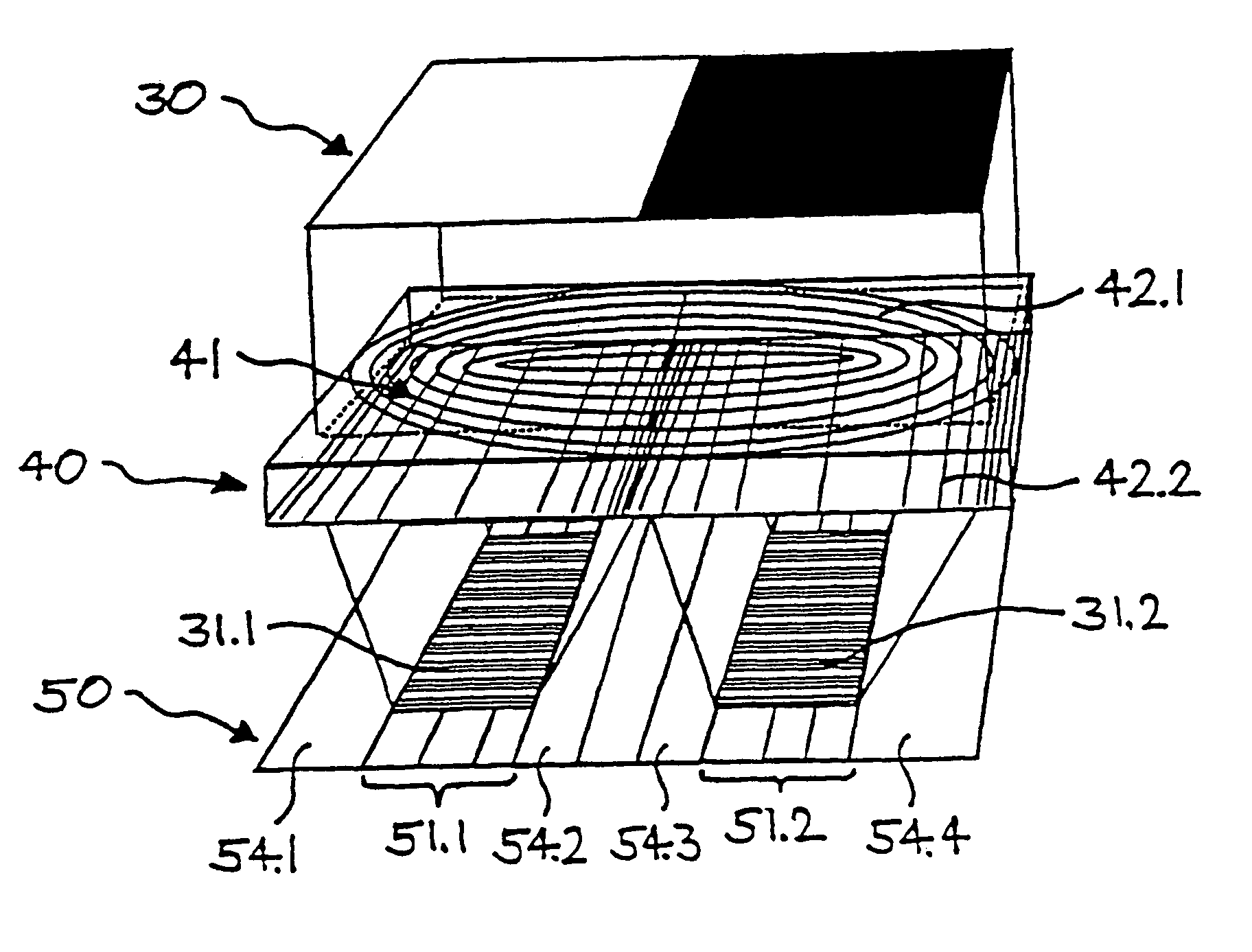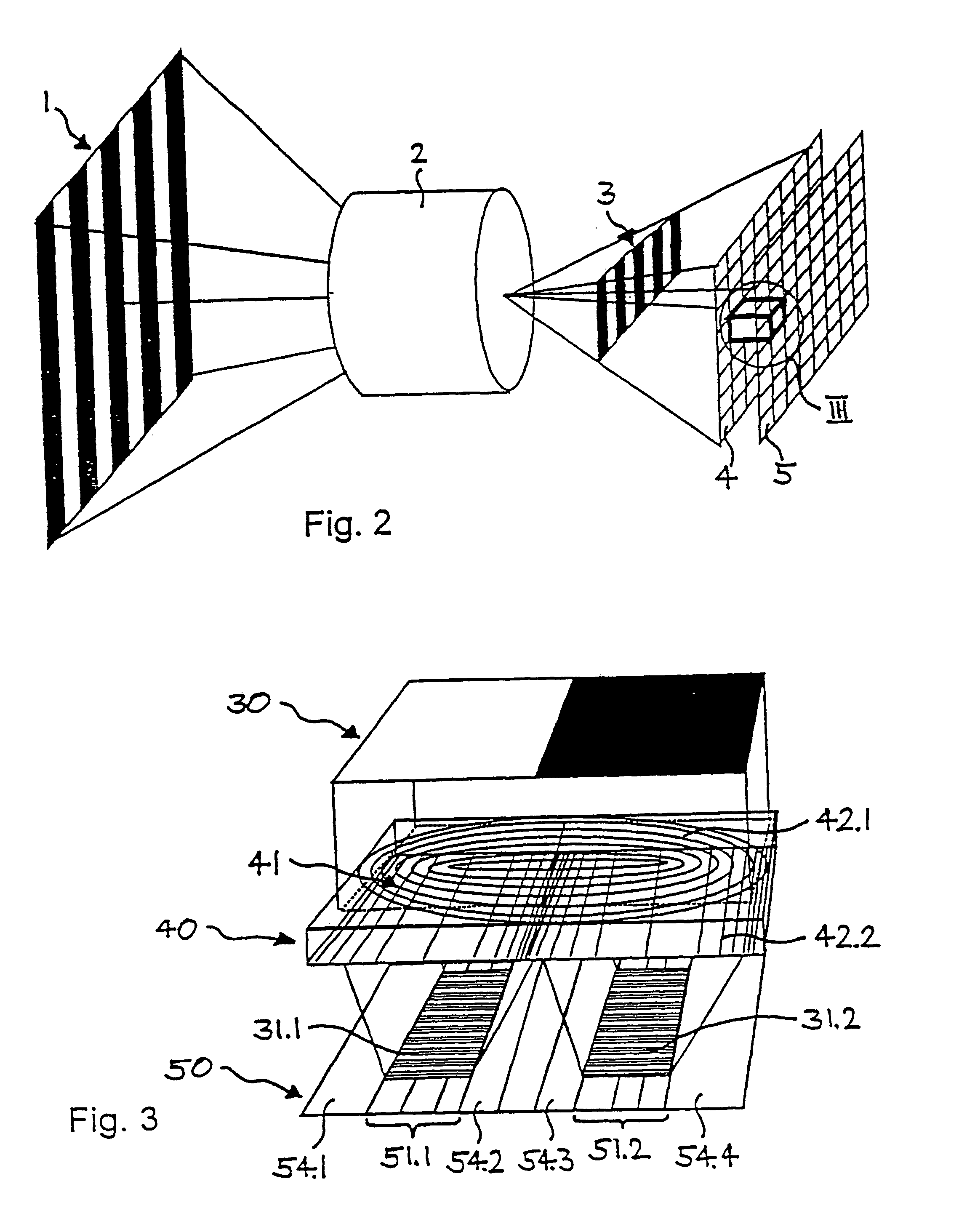Device and method for spatially resolved photodetection and demodulation of modulated electromagnetic waves
a technology of modulated electromagnetic waves and devices, applied in radiation controlled devices, optical radiation measurement, instruments, etc., can solve the problems of inhomogeneity, difficult to realize four transfer gates with equal transfer efficiency, poor and slow charge transfer from the photo site to the storage site, etc., to achieve small size, reduce the effect of light power and enlarging the integration tim
- Summary
- Abstract
- Description
- Claims
- Application Information
AI Technical Summary
Benefits of technology
Problems solved by technology
Method used
Image
Examples
Embodiment Construction
[0074]The basic structure of an exemplified pixel 50 of a device according to the invention is illustrated in FIG. 1. The pixel 50 comprises, e.g., two light-sensitive photo sites 51.1, 51.2. A first photo site 51.1 has a first photo gate 52.1 for the phase angle 0° and a second photo gate 52.2 for the phase angle 180°; a second photo site 51.2 has a third photo gate 52.3 for the phase angle 90° and a fourth photo gate 52.4 for the phase angle 270°. Between the two photo gates 52.1, 52.2 (or 52.3, 52.4, respectively) in each photo site 51.1 (or 51.2), there is a middle photo gate 53.1 (or 53.2) which is preferably kept at a fixed potential. The pixel 50 further comprises light-protected storage gates 54.1–54.4, each of which is associated to a photo gate 52.1–52.4. A first storage gate 54.1 is for storing signals with phase angle 0°, a second storage gate 54.2 for storing signals with phase angle 180°, a third storage gate 54.3 for storing signals with phase angle 90°, and a fourth ...
PUM
 Login to View More
Login to View More Abstract
Description
Claims
Application Information
 Login to View More
Login to View More - R&D
- Intellectual Property
- Life Sciences
- Materials
- Tech Scout
- Unparalleled Data Quality
- Higher Quality Content
- 60% Fewer Hallucinations
Browse by: Latest US Patents, China's latest patents, Technical Efficacy Thesaurus, Application Domain, Technology Topic, Popular Technical Reports.
© 2025 PatSnap. All rights reserved.Legal|Privacy policy|Modern Slavery Act Transparency Statement|Sitemap|About US| Contact US: help@patsnap.com



